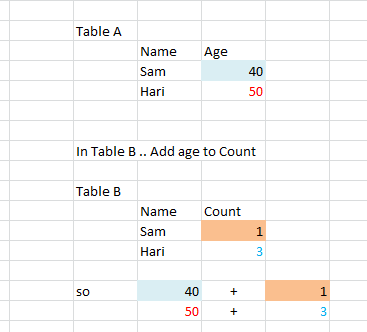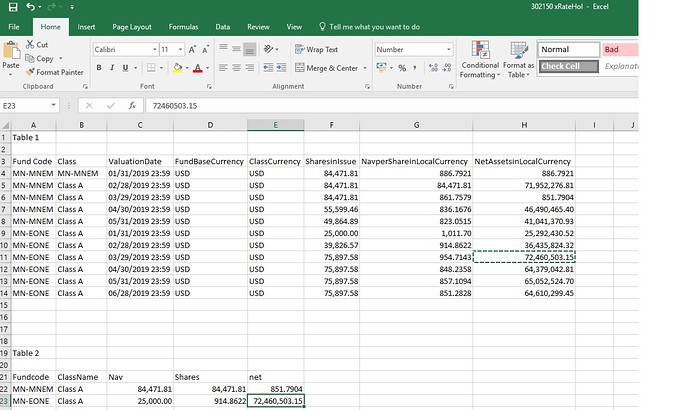Hi
I have the following table
|Fund Code|Class |ValuationDate|SharesinIssue|NavperShareinLocalCurrency|
|MN-MNEM|Class A|01/31/2019 23:59|84,471.81|886.7921|
|MN-MNEM|Class A|02/28/2019 23:59|84,471.81|851.7904|
|MN-MNEM|Class A|03/29/2019 23:59|84,471.81|861.7579|
|MN-MNEM|Class A|04/30/2019 23:59|55,599.46|836.1676|
|MN-MNEM|Class A|05/31/2019 23:59|49,864.89|823.0515|
|MN-MNEM|Class A|06/28/2019 23:59|38,517.32|837.131|
|MN-MNEM|Class A|07/31/2019 23:59|32,479.80|832.2994|
|MN-MNEM|Class A|08/30/2019 23:59|32,479.80|843.2283|
|MN-MNEM|Class A|09/30/2019 23:59|32,479.80|824.7786|
|MN-MNEM|Class A|10/31/2019 23:59|31,262.91|816.5636|
|MN-MNEM|Class A|11/29/2019 23:59|31,030.23|785.6692|
|MN-MNEM|Class A|12/31/2019 23:59|29,437.19|767.3134|
|MN-EONE|Class A|06/30/2019 23:59|25,000.00|1,011.70|
|MN-EONE|Class A|07/31/2019 23:59|39,826.57|914.8622|
|MN-EONE|Class A|08/31/2019 23:59|75,897.58|954.7143|
|MN-EONE|Class A|09/30/2019 23:59|75,897.58|848.2358|
|MN-EONE|Class A|10/31/2019 23:59|75,897.58|857.1094|
|MN-EONE|Class A|11/30/2019 23:59|75,897.58|851.2828|
|MN-EONE|Class A|12/31/2019 23:59|75,897.58|1,015.00|
I need to first of all count the number of records based on fundcode and class. then if there is 6 records the same when you count them populate the SharesinIssue from table1 to columnA in table 2 where valuation date begings with 01. if it has 02 in the date populate the SharesinIssue from table1a to columnB in table 2. if it has 03 in the date populate SharesinIssue from table 1 to columnC in table 2.
is this possible and if so any idea how i would even go about doing it

